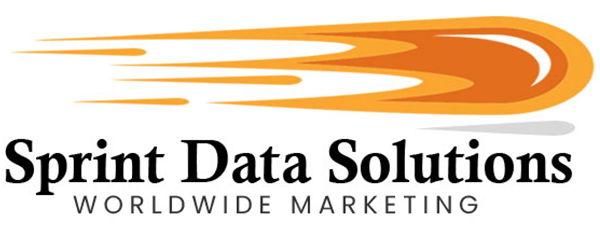Senior Citizens Are An Important And Growing Market Demographic
A core principle of business success is recognizing that there is no such thing as a one-size-fits-all customer. Just as the marketplace offers a wide variety of products and services, consumers exist in diverse life stages, circumstances, and mindsets that shape their interests, priorities, and purchasing behaviors. For example, a young adult buying their first car is navigating an entirely different set of decisions than someone seeking financial planning assistance for estate management or retirement. Tailoring marketing strategies to account for these differences is essential for achieving meaningful engagement and sales.
One of the most critical factors in defining consumer behavior is age. Needs, preferences, and communication styles shift significantly across life stages. Children require support from parents in selecting age-appropriate goods; adults often prioritize convenience, efficiency, and performance; while seniors—particularly those who are retired—represent a rapidly growing and uniquely positioned demographic. This group typically has distinct physical, financial, and lifestyle considerations that influence their choices, from healthcare and travel to home safety and leisure products.
As longevity increases and the senior population expands, marketing to this audience is more relevant than ever. Retirees often have both the time and financial freedom to explore new products and services, but they also value clarity, trust, and personalized support. Businesses that take the time to understand and cater to the evolving needs of seniors can build strong, lasting relationships with a highly loyal consumer base.

More Seniors Than Ever
The United States is undergoing a significant demographic shift that mirrors trends already seen in other developed nations like Japan. America’s senior population is rapidly growing, moving toward becoming one of the most influential segments of society rather than a minority group. This transformation is driven by two key societal factors that are reshaping the country’s population profile and consumer landscape.
The first major driver is technological and medical advancement. Innovations in healthcare have extended lifespans dramatically. Conditions that were once life-limiting—such as heart disease, cancer, and certain chronic illnesses—can now be managed more effectively or even cured. Advanced treatments, early detection methods, and lifestyle management programs mean that more Americans are living well into their 80s and 90s, often decades beyond traditional retirement age. With longer lifespans come new consumer needs, interests, and lifestyle shifts, making the senior demographic more active—and relevant—than ever before.
The second contributing factor is declining birth rates, largely influenced by economic pressures. Rising housing costs, healthcare expenses, student debt, and the overall cost of living have made starting and supporting a family financially challenging for many younger Americans. As a result, today’s adults—especially millennials—are delaying parenthood, having fewer children, or choosing to remain child-free. The traditional family model, where a single income could sustain a household with multiple children, has become increasingly rare. Dual-income households are now the norm, and even then, large families are often out of reach for middle-income earners.
This combination of increased senior longevity and reduced birth rates is reshaping the nation’s demographic future. With fewer young people entering the population and a rapidly aging generation living longer, seniors are poised to become a dominant force in culture, politics, and the economy. For businesses and marketers, this shift highlights the importance of understanding and serving the evolving needs of this vital and growing consumer group.
For the first time in its demographic history, the United States is approaching a tipping point where the number of senior citizens may soon surpass the number of children. This shift presents both challenges and opportunities. One of the most pressing concerns is the potential for economic strain on age-dependent systems, such as pensions, social security, and public healthcare. These systems are often funded by taxes collected from the working-age population. As birth rates decline and the workforce shrinks, fewer contributors will be available to sustain the growing financial demands of an aging population. This dynamic may lead to “pipeline” issues, where the inflow of funds needed to support retirement benefits and eldercare services becomes insufficient, putting long-term fiscal pressure on government programs and financial institutions.
At the same time, however, this demographic transition also opens the door to significant economic opportunities. Industries that serve seniors—such as healthcare, home modification, mobility products, financial planning, wellness, and assisted living—are experiencing rapid growth. Unlike sectors that are plateauing or declining, the senior market is expanding steadily and is projected to continue this upward trend for decades. This generation of retirees is also redefining what it means to age, with many seeking to stay active, independent, and socially engaged well into their 70s, 80s, and beyond.
Businesses that adapt to meet the needs of older adults will be well-positioned to capitalize on a stable, high-demand consumer segment. From tailored marketing strategies to product design and service delivery, companies that prioritize the senior market can achieve sustainable growth while addressing one of the most profound demographic shifts of the 21st century. The future belongs to those who see aging not as a limitation, but as a marketplace full of potential.
Appropriate Products & Services For The Senior Demographic
The senior citizen market represents a powerful and growing consumer segment with distinct needs, preferences, and lifestyle goals. What sets this group apart is not only their increased leisure time but also their financial readiness, with many individuals having accumulated significant savings, pensions, or retirement funds. As a result, seniors are often more willing to invest in quality products and long-term value, particularly when it comes to improving their comfort, health, and overall quality of life.
This generation also tends to be loyal and highly responsive to personalized outreach, especially when marketing is clear, trustworthy, and relevant to their stage in life. With the right targeting, businesses can achieve above-average engagement rates and strong return on investment. Furthermore, seniors often have a broader influence on household decisions, including multigenerational families or caretaking arrangements.
Products and services that perform exceptionally well in the senior market span several categories. These include not only essentials like healthcare solutions, mobility aids, and financial planning services, but also lifestyle and enrichment areas such as travel packages tailored for retirees, wellness programs, home safety renovations, dietary supplements, and even educational or hobby-based subscriptions. Tech solutions designed with simplicity and accessibility in mind—like medical alert devices or senior-friendly tablets—are also gaining traction.
Understanding this demographic and meeting them with respect, clarity, and thoughtful offerings can position a business for sustained success in a market that is poised to grow for many years to come.

Home Support & Maintenance
Aging naturally brings physical limitations, even for those who were once in peak health. Over time, strength, flexibility, and endurance decrease, and for many seniors, this results in reduced mobility—requiring aids such as walkers, canes, or wheelchairs. These limitations can make everyday household upkeep difficult or even unsafe, posing challenges for seniors who wish to maintain independence and remain in their own homes rather than transitioning to assisted living facilities.
To support this desire for aging in place, there is strong demand for home maintenance solutions designed specifically with seniors in mind. This includes both innovative products like smart furniture, automated lighting, and voice-activated home systems, as well as essential services like housekeeping, landscaping, and handyman repairs. These offerings are not just conveniences—they are critical enablers of comfort, safety, and dignity for the aging population.
Medical Support & Treatment Management
As individuals age, medical concerns become increasingly common. Chronic conditions such as arthritis, high blood pressure, diabetes, or cardiovascular disease often arise, requiring ongoing monitoring and care. However, thanks to advancements in healthcare, many of these conditions no longer necessitate extended hospital stays. Instead, they can be safely managed at home with the right combination of medication, medical devices, and support services.
This creates a growing need for accessible, senior-focused healthcare solutions—ranging from prescription delivery and telemedicine services to wearable health monitors, mobility aids, and user-friendly medical equipment. With targeted outreach, businesses can provide seniors with the tools they need to manage their health effectively while remaining active and independent. The key lies in connecting the right solution with the right individual in a way that feels personal, empowering, and trustworthy.
Insurance Planning
As individuals transition into retirement, financial planning priorities shift, especially when it comes to protecting assets and ensuring peace of mind for loved ones. While traditional life insurance continues to be relevant for many seniors, final expense insurance has become an increasingly popular and practical solution. This specialized form of coverage focuses specifically on covering end-of-life expenses, such as funeral costs, burial or cremation services, and related administrative needs.
Unlike more comprehensive life insurance policies, final expense plans are typically easier for seniors to obtain, often requiring no medical exams and featuring simplified underwriting processes. These plans allow seniors to manage the financial aspects of their passing ahead of time, ensuring that family members aren’t left with unexpected costs during a difficult period. It’s a dignified, proactive financial step that resonates with older adults looking to ease burdens for their loved ones.
Senior Travel & Leisure
With more free time and, in many cases, a comfortable pool of retirement savings or pension income, travel becomes a major part of the senior lifestyle. Unlike younger travelers chasing quick getaways or budget experiences, retired travelers often seek premium, well-curated travel opportunities that offer relaxation, enrichment, and convenience. Cruises, guided tours, heritage trips, and destination vacations tailored for comfort and accessibility are frequently on the itinerary.
This opens up a lucrative market for travel-related products and services that cater specifically to older adults. High-quality luggage, travel insurance, wellness travel packages, and senior-friendly accommodations all play an essential role. Additionally, extended stays in vacation homes or leased villas—especially in warm-weather destinations—are becoming increasingly common. Businesses that offer personalized, stress-free travel experiences with concierge-level service can build strong loyalty with this segment of travelers who value comfort, safety, and memorable experiences.
Political Action
One of the most consistently engaged demographics in the political landscape is the senior population. As Americans enter retirement, they often become more active in political discourse and civic participation, whether through donations, grassroots advocacy, campaign support, or simply being a reliable voting bloc. For political parties, candidates, and advocacy groups, seniors represent a high-value audience that consistently turns out and pays close attention to policy issues that affect their lives and communities.
This increased engagement is partially driven by greater flexibility in their schedules. With more free time and fewer work or family obligations, many seniors are able to immerse themselves in political content across television, talk radio, online media, and community forums. Their long-term perspective, combined with a vested interest in issues such as healthcare, social security, taxation, and public safety, makes them more likely to participate in meaningful ways—from attending town halls and rallies to writing letters and making contributions.
For political strategists, this means that targeting seniors with well-crafted messaging and policy positions can result in strong levels of support and turnout. Whether mobilizing voters during an election season or building a donor base for sustained advocacy, tapping into the senior segment offers a strategic advantage for any campaign or movement seeking influence and consistency.

Find The Seniors That Benefit From Your Product Or Service
Sprint Data Solutions Worldwide Marketing is fully committed to upholding the highest ethical and legal standards when it comes to collecting, managing, and distributing senior citizen contact data. All of our data is sourced through consensual and compliant methods, with a strong emphasis on opt-in systems. This ensures that every senior contact in our database has expressed active interest in receiving marketing or informational content, offering businesses a responsive and permission-based audience.
Given the natural transitions in the senior population—including changes in health and mortality—it’s essential to keep senior databases accurate and up to date. Sprint Data Solutions employs rigorous list maintenance protocols to regularly validate and clean records, ensuring that contacts are not outdated or irrelevant. This attention to data integrity helps to maximize engagement and eliminate wasted marketing spend on invalid or deceased records.
Our senior contact data can be organized and delivered across a wide range of geographic parameters. Whether you’re planning a nationwide campaign or a hyper-local initiative, we can meet your needs. Options include full national coverage, regional targeting (e.g., the New England area), state-specific outreach (like Maine), city- and town-level targeting, and even neighborhood-specific segmentation, such as reaching senior residents in North Brewer, Bangor.
Beyond location, Sprint Data Solutions offers powerful demographic segmentation tools that allow for highly customized targeting. Our databases can be filtered by age brackets, gender, income level, ethnicity, religious affiliation, and more. Whether your campaign calls for middle-income Asian Americans over 65, or Christian senior women aged 65–75, our data can deliver with precision. We also support multiple communication formats, offering physical mailing addresses, landline numbers, email addresses, and SMS-ready mobile numbers—enabling a fully multi-channel outreach strategy.
If your business is ready to reach and resonate with the senior audience across the United States, Sprint Data Solutions Worldwide Marketing has the tools, data, and expertise to help you succeed. Contact our team today to learn more and begin building a targeted campaign that delivers results.






